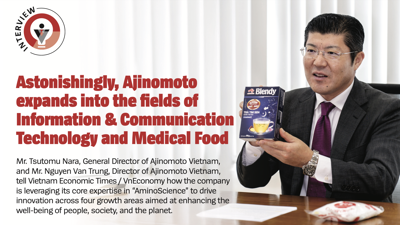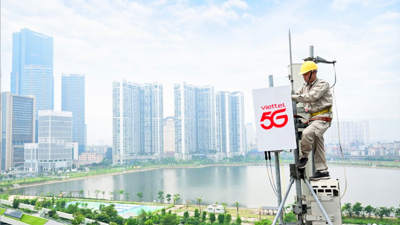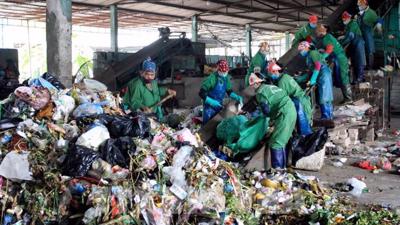Unknown outcome from higher excise tax rates
Much debate surrounds the introduction of higher excise tax rates on alcoholic beverages and the benefits or otherwise.

Excise tax rates on alcoholic beverages have been rising consistently since 2008, with rates on products containing over 20 per cent alcohol by volume (ABV) and beer increasing by 20 percentage points, from 45 to 65 per cent, while those on wine with an ABV of under 20 per cent went up 10 percentage points, from 25 to 35 per cent.
During this time, data from the Vietnam Institute for Economic and Policy Research (VEPR) reveals that State budget revenues tripled, with the share of excise taxes in total State revenue rising from 5.8 per cent to 8.8 per cent, as of 2023, contributing significantly to sustainable revenue growth. Since most excise taxes are collected from major corporations and factories, State revenue collection remains relatively stable and concentrated.
Controlling illegal products
Despite continuous increases in excise taxes on alcoholic beverages, a study by the Central Institute for Economic Management (CIEM) indicates that average per capita alcohol consumption more than doubled during the 2005-2015 period and the proportion of the population engaging in alcohol abuse, defined as consuming 60 grams or more of pure alcohol at least once a month, increased ten-fold. This raises questions about whether policies on managing alcoholic beverages, including excise tax policies, have effectively achieved their goal of regulating societal consumption.
Mr. Tran Hau Cuong, Director of the Hanoi Liquor and Beverage Joint Stock Company (HALICO), pointed out that the increase in the excise tax on spirits in recent years may not have effectively reduced alcohol consumption or improved consumer health. “Every time the tax is raised, we notice a growing tendency for consumers to switch to illegal or counterfeit alcohol,” Mr. Cuong said.
During a recent market survey in northern cities and provinces in Vietnam, he observed that many private supermarkets and stores were selling half-liter bottles of alcohol for just VND18,000 ($0.70) and bore labels that were not issued by the General Department of Customs or the General Department of Taxation.
The greatest challenge facing the alcohol industry, he believes, is the unfair competition between legitimate businesses that fully comply with tax regulations and those that evade taxes. As a long-established liquor company with 120 years of history in Vietnam, HALICO has experienced many ups and downs, but according to Mr. Cuong, now may be the most challenging time, particularly since the Covid-19 pandemic resulted in consumer demand falling sharply.
A representative from the Market Management Agency also highlighted that the significant differences in tax rates and compliance costs between legal and illegal alcohol and beer result in a significant price gap. This price disparity incentivizes illegal profit-making, while consumers are likely to opt for cheaper, more convenient products without considering quality. If this trend continues, a resurgence in unregulated alcohol, such as “banana leaf” liquor (illegally-made liquor, bottled without labelling and with dried banana leaves used as a bottle cap), may well occur, as it did in the past.
In the first half of 2024, the Vietnam Directorate of Market Surveillance at the Ministry of Industry and Trade handled 153 cases involving illegal alcohol, imposing fines totaling VND1.5 billion ($59,525) and confiscating 18,671 bottles and 14,682 liters. Thirty-eight cartons of beer were also confiscated, resulting in fines of VND587 million ($23,295) and the seizure of 16,239 cans. Despite these achievements, the Directorate acknowledges that the inspection and supervision force remains limited, and the lack of coordination between relevant agencies allows illegal alcohol and beer to continue to proliferate in the community.
Tax proposals
There has been a proposal made to continue increasing excise taxes on alcohol and beer. In the latest draft of the amended Law on Excise Taxes, the Ministry of Finance also plans to include sugary beverages, with a sugar content of over 5 grams per 100 ml, according to Vietnam Standards (TCVN), as taxable items.
Ms. Nguyen Thi Cuc, Chairwoman of the Vietnam Tax Consultants’ Association (VTCA), believes that the policy may not achieve its intended effect. “Increasing taxes raises prices, which may limit the production of alcohol and beer but may not necessarily achieve the goal of reducing the consumption of alcohol and beer or mitigating the health impacts on the population,” she said. “In reality, higher taxes could lead to an increase in smuggled goods, with even higher-income consumers shifting to smuggled alcohol and beer.”
Moreover, consumers in rural areas with lower incomes are likely to move towards self-sufficiency and profit by home-brewing their own alcohol, which bypasses excise taxes and fails to ensure product quality, posing a risk to public health if sold. As a result, the goals of reducing consumption and ensuring public health may be difficult to actually achieve.
Regarding the inclusion of sugary beverages, Ms. Cuc suggested careful consideration of the appropriate sugar content threshold, whether it should be 5 grams per 100 ml or 7 or 8 grams per 100 ml, with an eye on the experiences of other countries that have levied such taxes. The potential shift of consumers towards other hard-to-control products, such as syrup or bubble tea, should also be taken into account.
Dr. Nguyen Quoc Viet, Deputy Director of the VEPR, also emphasized the need for the drafting body to consider the loss of revenue that may occur when production shifts from the formal to the informal sector. When formal production shrinks due to competition from the informal sector, workers employed in the formal sector could lose their jobs or face wage cuts. It is also important to consider the fluctuations in value added tax (VAT) revenue when increasing excise tax, as VAT accounts for a significant proportion, of 27-28 per cent, of total State budget revenue.
More importantly, the increase in excise tax would not only affect the beverage industry but could also impact many other sectors, including tourism, which contributes significantly to VAT revenue. It is crucial to evaluate the many effects, especially given the additional impact this year from the Law on the Prevention and Control of Alcohol-Related Harm and Decree No. 100/2019/ND-CP dated December 30, 2019, which imposes penalties for administrative violations in the road and railway traffic sectors to prevent drivers from drinking alcoholic beverages.
“In the absence of a thorough evaluation, with only qualitative assessments and no quantifiable measures, the drafting committee could consider adopting a cautious approach, such as implementing the lowest possible tax increase,” Dr. Viet suggested. “If sugary drinks were to be included, they should be taxed at a low rate initially to assess the impact. After monitoring for a certain period of time, possibly until 2028, the effects of the tax increase could be reassessed and other methods considered.”







![[Interactive]: Economic overview - April 2025](https://media.vneconomy.vn/400x225/images/upload/2025/05/06/5a245778-67b1-4874-a8dc-21f8cfed62a6.png)